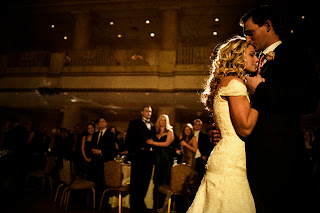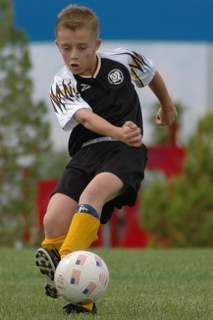The basic deal with regard to aperture has to do with the inverse relationship between the aperture and the depth of field (what I also call the range of focus). If you let your camera's software determine what kind of shutter speed you need to go along with a selected aperture*, then you can concentrate on choosing an aperture to achieve the effect you are looking for. More on that in a second.
Nearly all photographic lenses have aperture setting measured in f-stops. The crazy, counter-intuitive thing is that a large f-stop number, like f22, indicates a very small hole in the lens. A small f-stop number, say f2, means a large hole in the lens. In the example below, image #1 is of a small f-number, and image #2 is of a large f-number.

As I wrote in part 1 of this tip, a large aperture means lots of light gets through to the sensor and requires the shutter to be open only a brief time (and, of course, the inverse is true, a small aperture needs a longer shutter opening). Another element affected by aperture is how much of the image is in focus beyond the exact spot where the lens if focused. This range of focus is called, as I mentioned, the depth of field. Depth of field means the depth, moving from the camera in a straight line in the direction the lens is pointed, of the field viewed by the camera that appears to be in focus to the viewer.
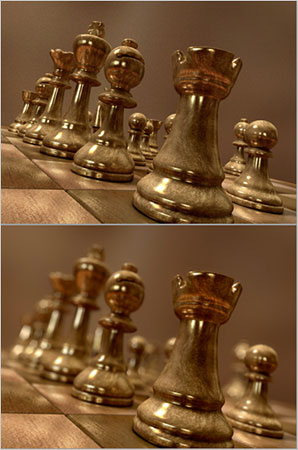
As you can see from the lower image, a larger aperture (smaller f-stop number) yields a narrow range of focus. Not much of the image beyond where the lens is focused appears to be in focus. A smaller aperture (larger f-number) yields an image (the upper image) that has greater depth of field or range of focus.
Okay, fair enough. The next question is: Do you care about the depth of field in your photographs? The answer, as with the rule of thirds, is: sometimes.
Let's take to examples from portrait photography to explain why you might want to pay attention to aperture and depth of field.
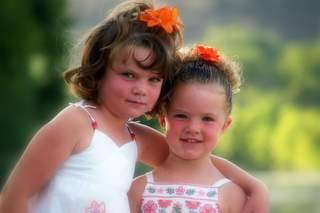
In this example, a photograph of just a couple of people, one of the effects photographers are sometimes going for is to have the main subjects in focus, but to have the background out of focus. Such an effect helps lead the viewers eye to the subject. To achieve this effect, select a large aperture, if conditions allow, and allow your camera to select the appropriate shutter speed.
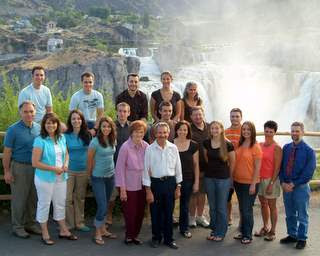
If the portrait is of a larger group, however, the photographer may want to have a greater depth of field to make sure the everyone in the photograph is clearly in focus. To achieve this effect, select a smaller aperture, and again, if conditions allow, let your camera select the proper shutter speed.
Other conditions where aperture control is useful are macro (close up) photography, photographs of flowers, online auction pictures, and landscapes (though each of these requires slightly different aperture settings).
We haven't yet addressed what to do if conditions DON'T allow you to select the aperture that you desire. We'll discuss those options later on. Stay tuned.
Up next, how does shutter speed affect image quality?
*By the way, this setting is called aperture priority. Check your camera. I'll bet it has this mode. More on modes in another tip.




